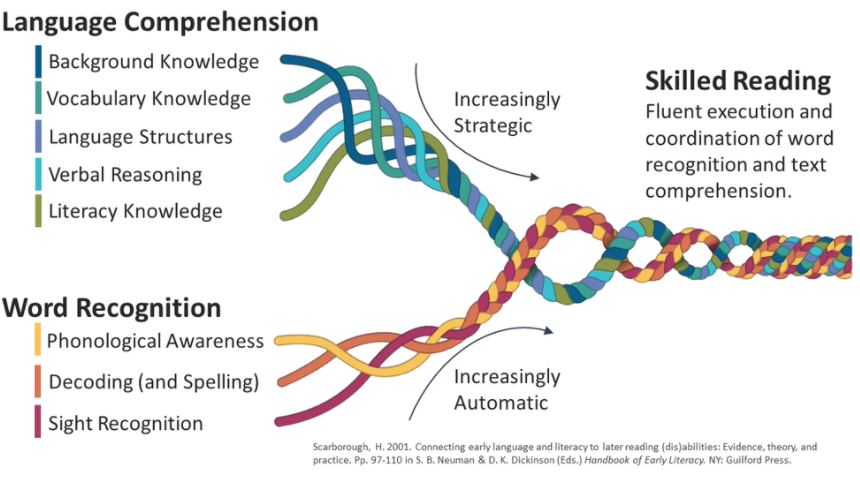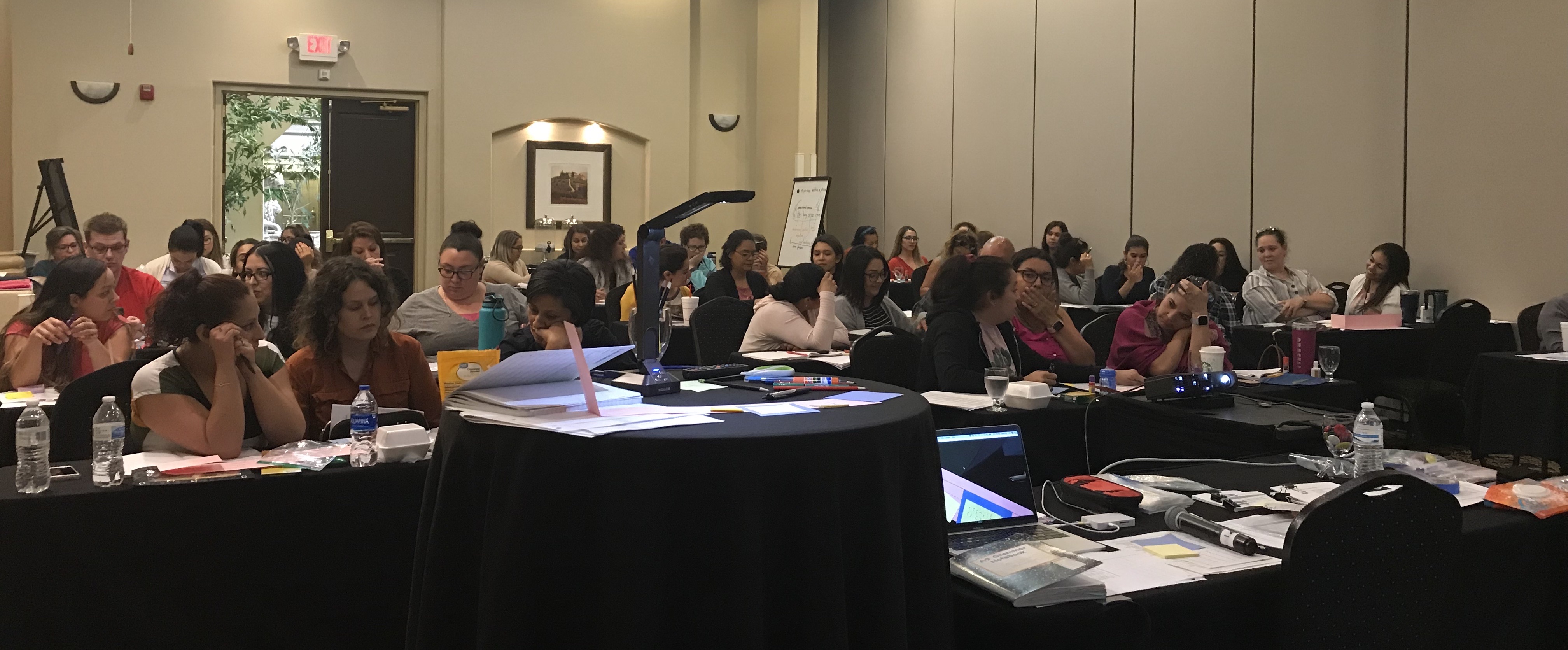Page
The Journey . . .
The Journey
by Alice Nine
If I've heard it once, I've heard it hundreds of times from teachers: I just can seem to find enough time. Well, I've been there. I know the feeling and frustration. It's what drove me to begin a journey that revolutionized my ELA instruction, a journey where I learned to integrate instruction and use just paper and pencils.
Scarborough's Reading Rope is a good visual of what must be woven together during integrated instruction. As you read about my journey, keep in mind that Scarborough had not yet designed this infographic.

When I was at the point of my greatest frustration, I was teaching each strand of word recognition as a stand-alone lesson with its unique workbook, activities, and assessment. Some strands were frayed and their fibers required additional workbooks.
Too much of my teaching time was consumed by reading work page directions with students. My precious little planning time was filled with managing lesson materials and grading student work pages, and what didn't get finished spilled into my personal time. And on top of all that, my instruction was often driven by student errors.
It wasn't working! There had to be a better way. I told my husband that if I couldn't find a better way, I would quit the profession... and that was drastic since teaching was my passion. Thus, my journey began.
One of my most compelling journey questions was, How did teachers in one-room schoolhouses teach reading and writing? I began reading their diaries and studying the 19th century language textbooks they used. At the same time, I read books like Jeanne Chall's The Great Debate, Rudolf Flesch's Why Johnny Can't Read and Why Johnny Still Can't Read, and Romalda Spalding's The Writing Road to Reading. I was inspired by Marva Collins Way (Marva Collins and Civia Tamarkin).
As I studied the 19th century language textbooks, my knowledge capacity
grew. And of course, that influenced my instructional practice.
One of my big takeaways from the 19th century textbooks was that I needed to eliminate the divisions of language instruction. I needed to weave them into a seamless lesson. I realized I had to toss all those workbooks. I also realized that phonics had to be systematic and explicit and should not be embedded in our reading time because we needed to be doing the work of readers when we read, not practicing word recognition skills. I saw reading and writing not as subjects but as skills--reciprocal skills, two sides of the same coin. And I began to believe that chalk and chalkboard, paper and pencils, could be enough. (Please believe me that I am not advocating a removal of books and technology. I'm just saying that quality of teaching does not depend on our resources or equipment.)
And so, I developed daily routines that seamlessly weave the strands together into what Scarborough calls word recognition. These routines fit into a language time we call Word Study.
It wasn't long before I began integrating language structure (a language comprehension strand on the Reading Rope) into my lessons. In the 19th century textbooks, I noticed that grammar dealt with words (semantics) and with sentences (syntax). So, word grammar (parts of speech) was woven into my "Word Talk" routine and I taught grammar anchor lessons. We created
a interactive grammar notebook with lots of charting activity. Eventually, the grammar anchor lessons and interactive notebook became known as Grammar Boot Camp
We diagrammed sentences in our work stations.
We used imitation writing to learn how to craft sentences. And I taught a series of lessons called How We Write using a one-sentence composition to introduce the processes and core vocabulary of writing.
For daily systematic, explicit, teacher-guided practice that integrated the strands, I developed a routine I call Tactical Sentence Instruction.
My students were so successful! I began to share the success with other teachers and they were interested! The result? I began conducting a workshop all about phonological awareness, phonics, and orthographic instruction (Johnny Can Spell) and another workshop all about grammar (Johnny Can Write, now called Grammar Boot Camp). I also shared other more narrowly focused workshops, i.e., How We Write, Tactical Sentence Instruction, Small Writings, Cursive Handwriting, Poetry Notebook, Ape the Author.
And because teachers asked, I wrote fourteen how-to manuals straight out of my
personal knowledge reservoir and my classroom experiences: JCSpell Teachers Guide, JCWrite Teachers Guide, Lesson Planner Series, Word Analysis Series, and Grammar Applications.
A couple years ago, I launched Alice Nine Academy so you and I can co-teach as you stream my student-facing lesson videos into your home or classroom. It is truly a dream come true!
I continue conduct workshops for teachers and parents via online venues--both live and on-demand. And I've added a blended instruction feature to support full implementation with student-facing lesson videos.

Empowering Students with Language Proficiency